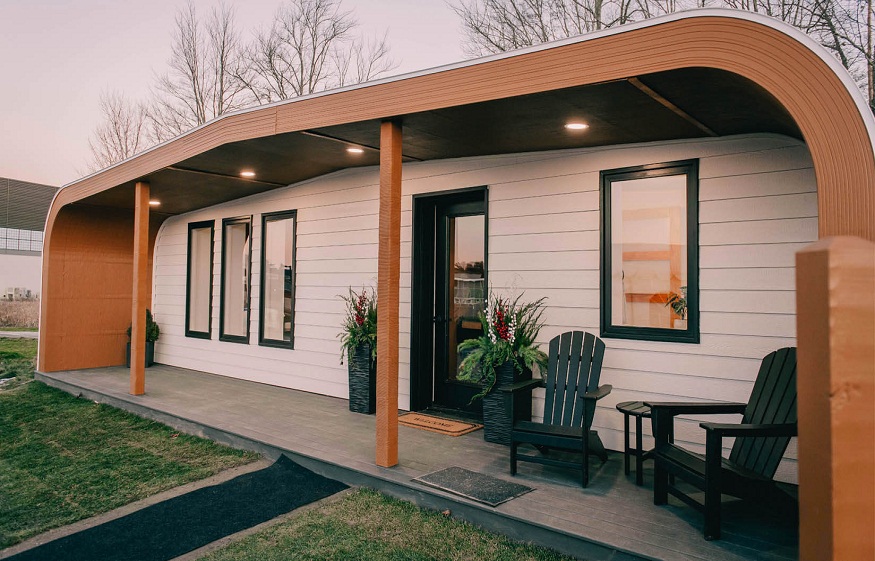In Dubai, to stand as it were amongst the most ambitious and futuristic architectural designs in the world, a key global center in architectural innovation. The emirate made massive investments in 3D printing technology in recent years and thus found itself in the vanguard of the construction revolution. Dubai 3D Printing Strategy for the realization of Dubai as a global leader in 3D printing technology by 2030 and 25 percent of the built environment created through 3D printing techniques. The biggest 3D printing companies in the city due to their many benefits have become important collaborators for architects in the revolution of the traditional design process. Architects may create previously unthinkable structures because of these companies’ tools and skills, which also improve creative freedom, speed up project schedules, lower costs, and encourage sustainability.
Design Freedom and Complexity Never Before Seen
Creating architectural design with the help of Dubai’s biggest 3D printing enterprises is radically different. Traditional construction methods severely constrain the form and structure of buildings, commonly forcing architects to deliver simple shapes and simple to produce buildings using common materials. Yet, 3D printing technology allows creating features with great precision and the very complicated geometries which hardly could be done with conventional methods.
Dubai’s leading 3D printing companies use advanced software to help architects imagine the craziest ideas they would otherwise never achieve. These technologies enable parametric design wherein walls with varying thicknesses, lattice structures, and organic forms can be made and would be both functional and aesthetically appealing. It allows designers to print complex patterns, curved surfaces, and ‘hollow’ areas without paying extra. Now architects can work with these firms to apply complex mathematical patterns, and biologic designs derived from nature, and create unique architectural features that address user needs and conditions as intended. This freedom allows the freedom of real site-specific and contextually responsive architecture to escape conventional constraints of uniformity that usually derive from conventional construction.
Visualization and Prototyping Quickly
A major benefit for Dubai’s 3D printing businesses is that they allow one to quickly prototype architectural ideas. As these companies can assist architects in creating physical models of designs before committing to full-scale manufacturing, they can assist architects in producing detailed physical models of their designs. This way, clients and stakeholders no longer have to figure out the proposed structures by digital renders or 2d drawings, communication is now much more improved. Multiple iterations may be generated rapidly and economically because of these companies’ rapid prototyping capabilities.
Innovation in Materials and Enhancement in Performance
Recent significant investments by Dubai’s top 3D printing enterprises into material research and development now enable architects to draw from a growing range of high-performance materials that are available in many grades, including those that can be customized precisely to suit project specifications. Such businesses have specialized in blending concrete ‘specialties’ into polymer composites and hybrid materials combining the best qualities of various materials. Depending on the performance attributes of interest such as weather resistance, structural strength, or thermal insulation, these materials can be designed for particular performance attributes.
These materials may be precisely placed where they are required within a building thanks to 3D printing service dubai. Architects can use this focused approach to create structures with variable-density walls that preserve structural integrity in some places while offering improved insulation in others. Gradients of materials can be used in individual architectural components to provide pieces that seamlessly change from opaque to translucent, hard to flexible, or ornamental to practical. Because architects can customize materials to this degree, they may concurrently optimize building performance across several dimensions, creating structures that are not only visually pleasing but also incredibly effective and functional.
Time and Cost Effectiveness
The financial benefits that Dubai’s 3D printing businesses provide have grown more alluring to developers and architects. Numerous factors contribute to these efficiencies, including the removal of scaffolding and formwork, lower labor requirements, less material waste, and the incorporation of several building systems into single printed components. Because the printing process is so precise, the technique also makes it less likely that expensive mistakes and rework will occur because the components will fit together precisely as intended. These time and money savings give architects a big edge in Dubai’s cutthroat market, enabling them to stay profitable while providing customers with greater value.
Benefits to the Environment and Sustainability
3D printing businesses in Dubai have strong environmental benefits as sustainability becomes more and more important in architectural practice. The accuracy of 3D printing greatly minimizes material waste, which is a big problem in traditional construction where 30–40% of materials frequently wind up as waste. To further lessen their influence on the environment, the top businesses have also created eco-friendly printing materials that use recycled materials or industrial waste.
This improves 3D printed constructions thermal performance by including air holes and insulation materials within walls during the printing process. The use of this method results in time shifting of the building’s energy needs for heating and cooling, as well as localized production that reduces transportation emissions associated with building supply and parts shipping. The environmental advantages that apply to 3D printing for architects who are willing to design for the benefit of sustainability are in total accord with Dubai’s wider sustainability goals and in particular its Clean Energy Strategy and Carbon Abatement Strategy. This is due to the reduced carbon footprint of the structures produced by 3D printing which is appealing to clients that seek to help the environment and comply with ever more stringent green building practices.
Conclusion
But becoming a 3D printing champion causes an architectural revolution among the architects in the region, as they use Dubai’s most advanced 3D printing tool and capacities offered by the biggest 3D printing companies in the region. By offering designs previously unheard of, these businesses are helping architects move the envelope of what is possible how quickly, what new materials have they developed, how much faster can the prototype be, how much more cost and time efficient can be, and how much more can it increase sustainability. As the technology develops and grows and anticipate that the partnership between Dubai’s top 3D printing companies and architects will produce even more striking architectural innovations. In addition to helping individual architectural offices, these businesses also help Dubai achieve its larger goals of being a global hub for innovation and sustainable built environment development.

